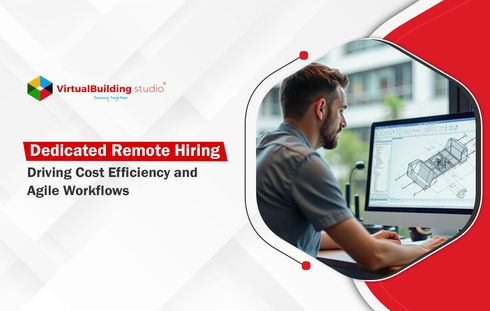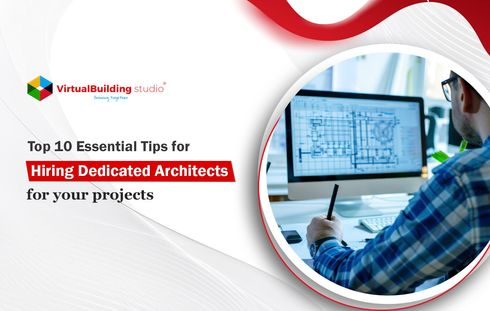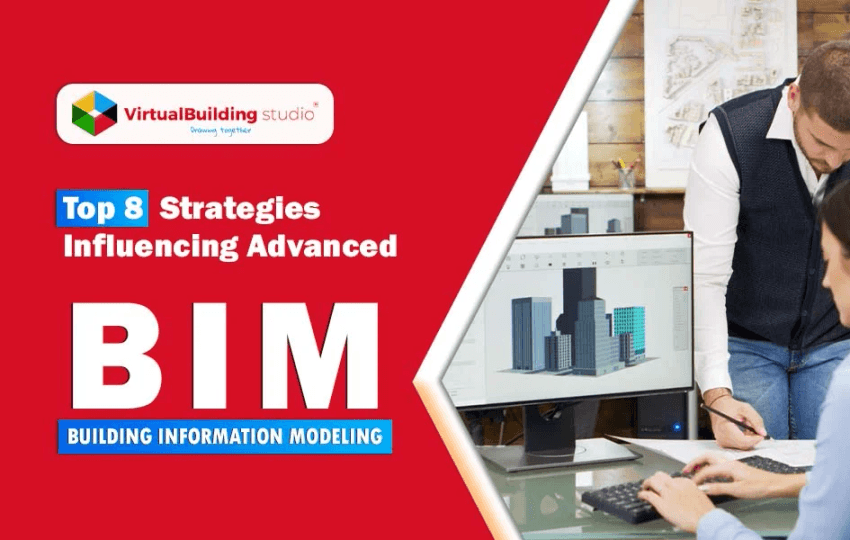
The Architecture, Engineering, and Construction (AEC) sector has witnessed ample transformations and developments over the years, owing to the technological boom experienced globally. From sketching layouts on paper to AutoCAD drafting to 3D models that entail the detailed construction and facility management process, the building design process has evolved drastically.
Integrating Building Information Modelling into the construction process translates to significant growth, piquing the graph of building design and construction evolution. It opened various territories for AEC professionals, allowing them to explore and analyze a building design on multiple levels.
Let’s delve deeper to explore why one should consider using BIM and integrate appropriate BIM strategies to enhance project quality and ensure resource optimization.
Building Information Modeling and the Need for Advanced Strategies
Building Information Modeling (BIM) is a 3D BIM modeling software that enables substantial improvement in the AEC industry by providing simple yet relevant solutions to the project requirements. The information entailed during the 3D modeling process is the most significant element. Revit BIM Modeling services revolve significantly around project data.
In comparison to the 2D paper format, digitizing data with BIM improves interoperability between various projects. Building design and construction face new challenges now and then. BIM provides a suitable solution to these persistent issues with utmost efficacy.
But, is it the peak of technological advancement or is it just the beginning?The use of BIM is a strategic choice, offering profuse benefits to the AEC sector by identifying impactful factors and strategies corresponding to these factors. It is essential to explore advanced Building Information Modeling strategies to reap the maximum benefits of Revit BIM modeling services.
The stakeholders can access all necessary data encompassed within the BIM models to erect a quality-driven project. The advancement of building design is synonymous with adopting advanced strategies that, when combined with BIM can foster collaboration and growth.
BIM Maturity Level Evaluation
Before adopting advanced BIM strategies, it is crucial to evaluate the company’s position and difference of working style from other competitors. This evaluation can be carried out by examining the BIM maturity level. The maturity level depends on staff performance, human resources, internal procedures, and IT infrastructure.
Usually, BIM maturity levels are evaluated using various scales, such as the BIM Maturity level according to the BIM Forum Classification system or the BIM Maturity level according to the AIA (American Institute of Architects) classification system.
Systematic use of advanced BIM strategies and targeted BIM software can facilitate better company positioning and higher BIM maturity levels.
Strategies for Advanced Building Information Modeling
Before integrating Scan to BIM services into the building design and construction process, it is important to understand the objective of using BIM for a specific project. The key to long-term efficiency is considering the use of BIM at the beginning of the project.
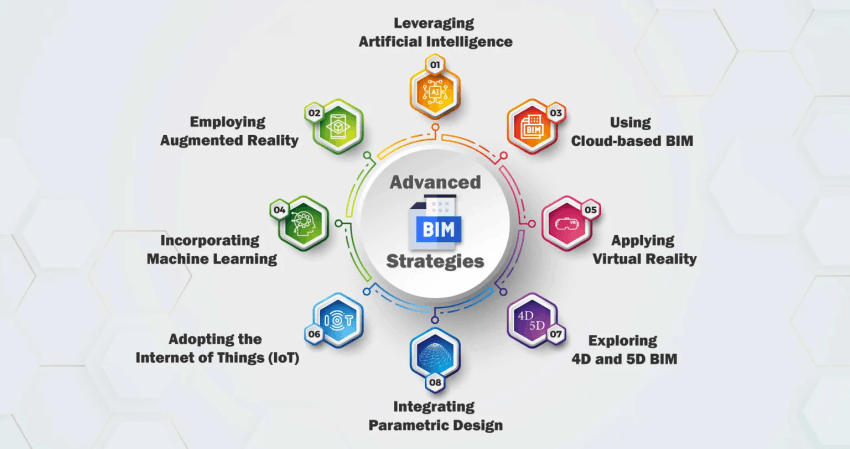
Once the AEC stakeholders are clear about the objectives of the project, they can consider combining appropriate strategies for advanced Building Information Modeling.
Let’s discuss in detail a few trends that are expected to enhance the future of Building Information Modelling:
Leveraging Artificial Intelligence
BIM Modeling Services is a digital representation of the physical and functional elements of a building in the form of a 3D model. AI-powered BIM allows architects and designers to develop real-time project models reflecting every minute of project detail.
The stakeholders can leverage AI algorithms that help in analyzing the vast amount of project data to generate intelligent design solutions for enhanced project quality and maximum efficiency.
Employing Augmented Reality
Augmented Reality (AR) is an interactive three-dimensional user experience that superimposes digital information into real-world scenarios. The users can interact with both physical and digital worlds using apps, software, or hardware such as AR glasses.
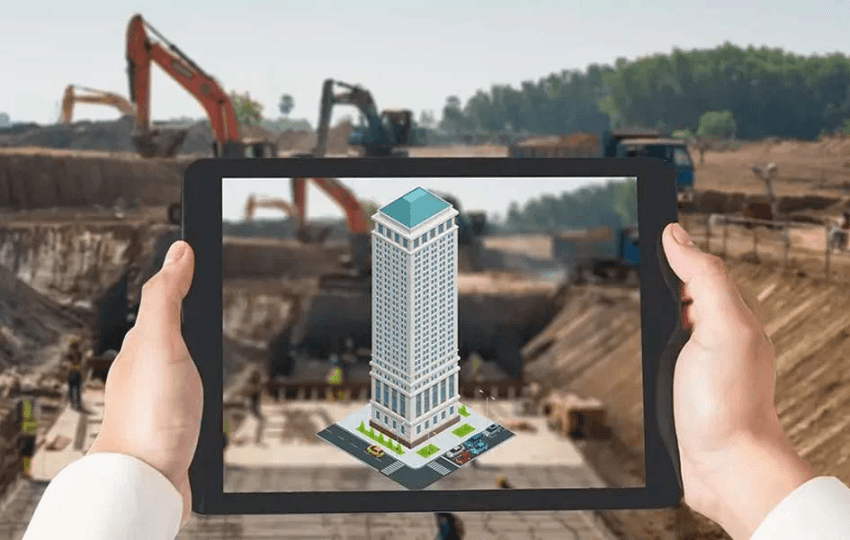
The recent years have seen a rising wave of augmented reality in the architecture and construction realm. With the ubiquity of BIM, the scope of AR integration into construction projects is significantly increasing, allowing companies to enhance their BIM models with AR.
With AR technology, it is more than possible to absorb the feel of a space before construction and mold the design as per the requirements.
Using Cloud-Based BIM
Cloud-based BIM services provide a common platform for project stakeholders to collaborate and communicate in real time regarding project progress and updates.
Cloud platform stores vast amounts of project data which is easily accessible from anywhere by any team member to analyze or make design alterations. Using Cloud with updated data streamlines the workflow and ensures everyone is on the same page.
Incorporating Machine Learning
An AEC project is a conjunction of data from multiple sources and formats. Machine learning algorithms can automate high-dimensional data analysis from various sources into verified, simple, and usable formats. Machine learning has shown significant growth in the past years, but is still in a nascent phase compared to other technological adaptations.
By integrating machine learning with Revit to BIM services, various tasks such as speech recognition, visual perception, decision-making, and language translations, can be performed seamlessly without human intelligence.
Applying Virtual Reality
Virtual reality is an immersive technology that creates a simulated 3D environment, allowing users to interact and experience their surroundings in real time. The computer-generated 3D environment depicts scenes and objects that are near to reality.
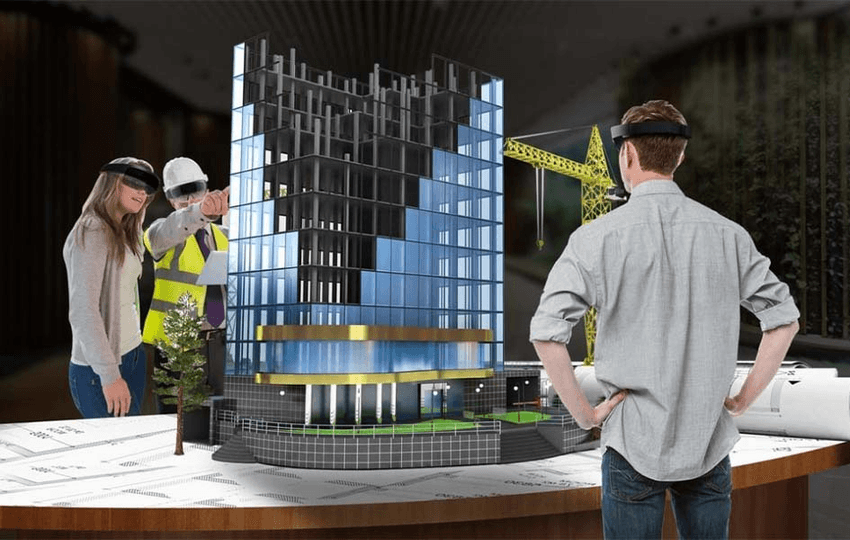
The AEC industry can witness transformational impacts by the combination of these cutting-edge technologies. Virtual reality serves various purposes including pre-construction planning, safety and equipment training purposes, quality control, and code compliance.
Adopting the Internet of Things (IoT)
The Internet of Things is a collective network of interrelated devices, sensors, and software used by AEC stakeholders to exchange project data with other IoT devices and the BIM cloud. Building Information Modeling can create smarter and more energy-efficient buildings by adopting IoT.
The designers can use IoT sensors to monitor occupancy and client preferences, creating a personalized and comfortable space for the users.
Exploring 4D and 5D BIM
BIM employs various dimensions that deal with multiple aspects of the project and related data to provide an elaborate level of detail (LOD). 4D and 5D BIM discuss two significant factors of project planning – time and money, respectively. 4D BIM generates project schedules outlining project flow and completion time.
The time-related data elaborates on the time consumption by various procedures of the construction process, including installation time, the time required to make the project operational, and other scheduling information. 5D BIM entails cost estimation and budget analysis requirements of a project.
Project cost is one of the crucial consideration factors, and 5D BIM provides the total cost incurred to the project owners throughout the construction process.
Integrating Parametric Design
Parametric design is a building design approach that uses algorithms to transform design intent into design output. The algorithms generate final parametric shapes based on the parameters set by the user rather than with a pre-determined initial design.
Parametric BIM modeling can generate multiple design iterations based on different parameters and criteria, allowing maximum creativity and design innovation.
Leading Building Information Modeling Towards Advancement
Advancement and growth come from evaluating the current scenario, stating objectives, defining opportunities, developing a strategy, and selecting the right tools to execute the project seamlessly. The use of BIM requires strategic planning and clear design objectives to attain desired results.
Integrating various strategies to Revit to BIM modeling services can foster the advancement of the construction process and facilitate quality-driven results. Engaging with multiple digitization strategies is a fundamental step to remain competitive in the AEC sector.


